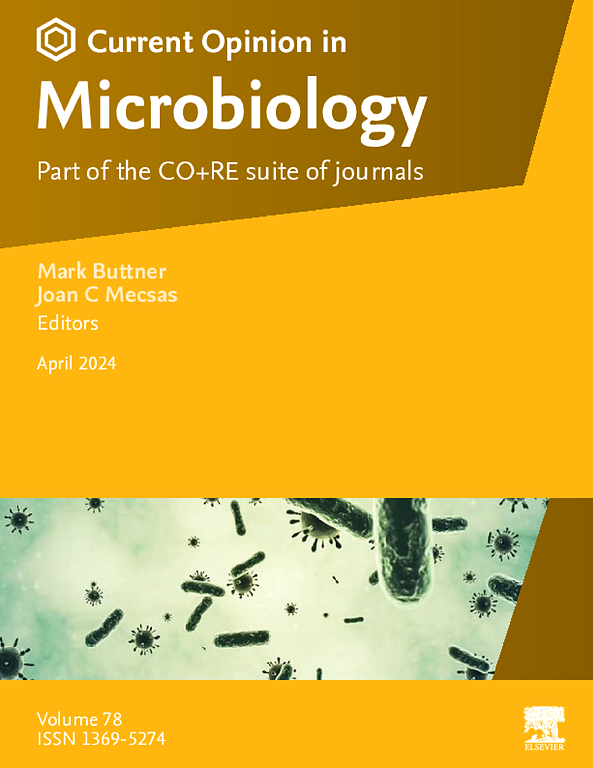巨核噬菌体的复杂发育机制
IF 7.5
2区 生物学
Q1 MICROBIOLOGY
引用次数: 0
摘要
与巨型噬菌体ΦKZ相关的噬菌体(科:Chimalliviridae)表现出复杂的发育周期。首先,组装两个围绕并保护噬菌体基因组的大分子隔室。感染后,注射的噬菌体基因组DNA (gDNA)被迅速包裹在一个基于脂质的“早期噬菌体感染(EPI)囊泡”中,该囊泡由细菌膜成分和注射的噬菌体蛋白组装而成。EPI囊泡是早期转录和局部蛋白合成的枢纽。一种早期表达的蛋白,Chimallin A (ChmA)/Phage Nuclear Enclosure (PhuN),组装一个独特的蛋白质“噬菌体核”,接收来自EPI囊泡的噬菌体gDNA。在这个噬菌体细胞核内,噬菌体DNA被选择性导入的噬菌体和宿主酶复制和转录。EPI囊泡、噬菌体核和包装衣壳完全将噬菌体dna从细菌细胞质中的核酸酶中分离出来。在这里,我们回顾了复杂的巨型噬菌体感染周期,抗免疫策略,它们各自在支持感染中的作用,以及最近用于解剖这些复杂过程的工具。本文章由计算机程序翻译,如有差异,请以英文原文为准。
The complex developmental mechanisms of nucleus-forming jumbo phages
Bacteriophages related to the jumbo phage ΦKZ (Family: Chimalliviridae) exhibit a complex developmental cycle. First, two large macromolecular compartments are assembled that surround and protect the bacteriophage genome. Upon infection, the injected phage genomic DNA (gDNA) is rapidly enclosed within a lipid-based ‘early phage infection (EPI) vesicle’, assembled with bacterial membrane components and injected phage proteins. The EPI vesicle serves as a hub for early transcription and localized protein synthesis. One early-expressed protein, Chimallin A (ChmA)/Phage Nuclear Enclosure (PhuN), assembles a distinct proteinaceous ‘phage nucleus’ that receives the phage gDNA from the EPI vesicle. Within this phage nucleus, phage DNA is replicated and transcribed by selectively imported phage and host enzymes. The EPI vesicle, phage nucleus, and packaged capsid completely isolate the phage gDNA from nucleases in the bacterial cytoplasm. Here, we review the complex jumbo phage infection cycle, anti-immune strategies, their respective roles in supporting infection, and recent tools used to dissect these intricate processes.
求助全文
通过发布文献求助,成功后即可免费获取论文全文。
去求助
来源期刊

Current opinion in microbiology
生物-微生物学
CiteScore
10.00
自引率
0.00%
发文量
114
审稿时长
6-12 weeks
期刊介绍:
Current Opinion in Microbiology is a systematic review journal that aims to provide specialists with a unique and educational platform to keep up-to-date with the expanding volume of information published in the field of microbiology. It consists of 6 issues per year covering the following 11 sections, each of which is reviewed once a year:
Host-microbe interactions: bacteria
Cell regulation
Environmental microbiology
Host-microbe interactions: fungi/parasites/viruses
Antimicrobials
Microbial systems biology
Growth and development: eukaryotes/prokaryotes
 求助内容:
求助内容: 应助结果提醒方式:
应助结果提醒方式:


